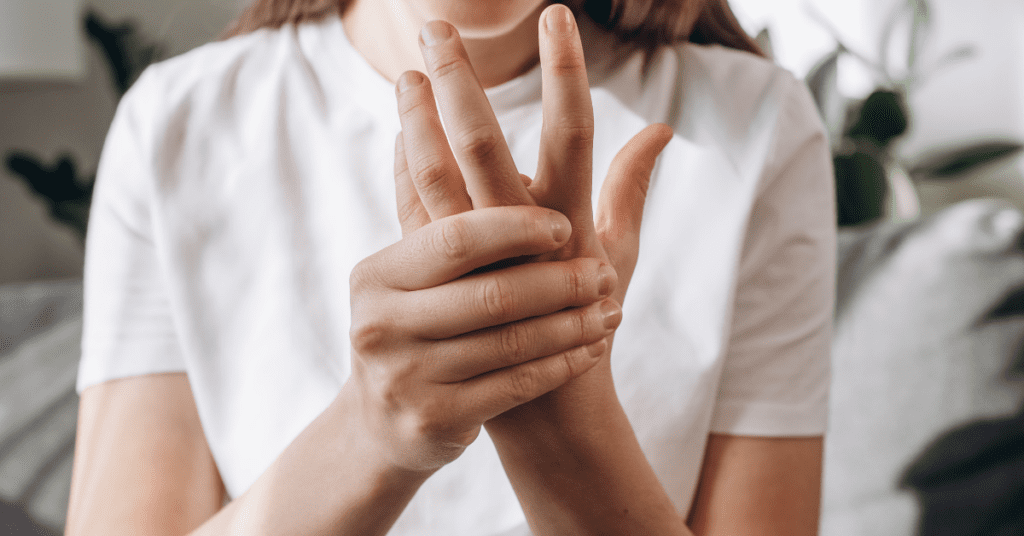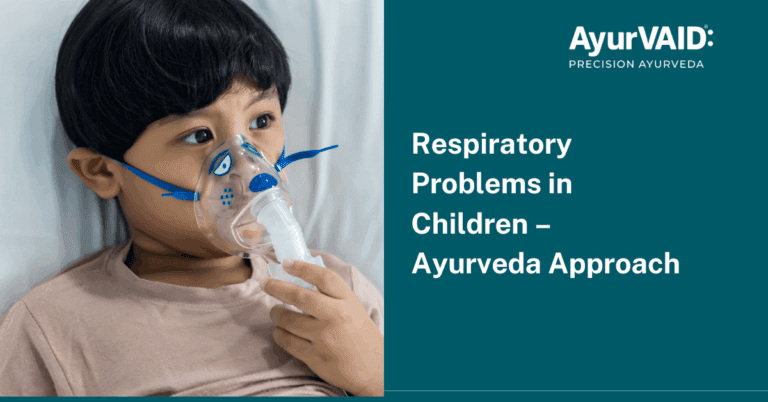Rheumatoid arthritis (RA), a chronic autoimmune condition, imposes challenges on affected individuals, marked by joint inflammation, pain, and debilitating stiffness. As medical horizons expand, Ayurveda emerges as a complementary avenue for managing RA.

Understanding RA and Aamvata
Rheumatoid Arthritis (RA) and Aamavata, a complex disease in Ayurveda, share an etiological and clinical relationship. Modern medicine focuses on inflammation mechanisms and develops a strategy to control it, while Ayurveda focuses on defense strategies. Both systems aim to understand the etiological process of inflammation in the gastrointestinal tract, leading to an immune response and inflammation. Understanding the pathophysiology of both systems is the integrative approach to developing a dual treatment plan for RA and Aamavata at the appropriate stages of the disease. This also provides insight into genetic and epigenetic factors in disease treatment and opens doors for further research.
In the context of rheumatoid arthritis, Ayurvedic principles attribute the disorder to an imbalance in the body’s doshas (Vata, Pitta, and Kapha). Ayurvedic interventions for RA aim to restore this balance through judicious lifestyle adjustments, dietary modifications, and targeted herbal formulations, providing a holistic framework for symptom management.
Causes, Symptoms, and Presentation
Rheumatoid arthritis is an autoimmune disorder causing persistent joint pain, swelling, and morning stiffness. It is influenced by genetic predisposition, environmental factors, and hormonal influences. Symptoms include fatigue, reduced range of motion, and muscle weakness. As the disease progresses, joint deformities may occur, affecting mobility and quality of life. Understanding the root causes is crucial for effective management. Factors such as genetic predisposition, environmental factors, and hormonal influences contribute to its onset and progression.

Ayurveda Treatment for RA
As per allopathic practitioners, there is no cure for RA. Medications can reduce inflammation in joints to relieve pain and prevent or slow joint damage. Occupational and physical therapy can help protect joints. If joints are severely damaged by RA, surgery may be necessary. Many drugs used to treat RA have potentially serious side effects. From the modern aspect, non-steroidal anti-inflammatory drugs (NSAID) and disease-modifying anti-rheumatic drugs (DMARD) are the main stay in this condition, however, they have serious adverse effects and have limitations for long-term therapy. Continuous use of allopathic drugs leads to symptoms like constipation, nausea, and abdominal discomfort. Based upon the Ayurvedic concepts of pathophysiology discussed earlier, the treatment strategy consists of:
- Balancing the Doshas.
- Increasing the digestive and metabolic fires, or Agni.
- Stopping the formation of Aama at different levels.
- Increasing digestion and excretion of Aama.
- Restoring the damaged intestinal mucosa and absorption.
These are achieved through diet, lifestyle changes, Panchakarma, and herbal medications. Ayurvedic medicines improve Jatharagni and lead to the formation of other Dhatu as well as stop the formation Ama.
Preventive Measures and Therapies
Ayurveda introduces preventive measures to thwart or minimize joint deformities associated with RA. Panchakarma, a detoxification protocol, aims to eliminate toxins and reinstate bodily equilibrium. Therapeutic interventions such as Abhyanga (oil massage) and Swedana (steam therapy) emerge as pivotal tools in enhancing joint flexibility and reducing stiffness.
Herbal Efficacy for Joint Health
Ayurvedic formulations, enriched with potent herbs like Shallaki (Boswellia serrata) and Guggul (Commiphora wightii), are lauded for their anti-arthritic properties. These formulations work synergistically to alleviate symptoms, offering a potential avenue to slow down the progression of joint deformities.
Diet and lifestyle to follow
A small amount of medicated warm water aids digestion and disintegration of Aama. Barley, horse gram, kodo millet, and red rice are recommended for their light and easy-to-digestible properties. Green leafy vegetables and fruits, particularly bitter ones like bitter melon, Neem, Patola, and Gokharu, contain antioxidant, fibrinolytic, and anti-inflammatory properties. Spices like ginger, turmeric, and garlic add flavor and antimicrobial, anti-inflammatory, and analgesic properties.
In navigating the landscape of rheumatoid arthritis, Ayurveda aligns with modern medical strategies for a comprehensive approach. Individuals seeking relief from RA symptoms are encouraged to consult qualified practitioners, ensuring a personalized treatment plan that includes the strengths of both ancient wisdom and contemporary medicine.
References:
- Basisht, G. K., Singh, R. H., & Chandola, H. (2012). Management of rheumatoid arthritis (Aamavata) using symbiohealth healthcare system. Ayu, 33(4), 466–474. https://doi.org/10.4103/0974-8520.110513
- Sandip D.Waghmare*, & Ranjana S. Waghmare. (2020). AYURVEDIC MANAGEMENT OF SEVERE AMAVATA (RHEUMATOID ARTHRITIS) WITH ITS COMPLICATIONS: A CASE STUDY. AYUSHDHARA, 6(6), 2480-2483. Retrieved from https://ayushdhara.in/index.php/ayushdhara/article/view/508
- Patil, Rajkala. (2016). Management of Rheumatoid Arthritis through Ayurveda. Journal of Traditional Medicine & Clinical Naturopathy. 5. 1-4. 10.4172/2573-4555.1000189.






